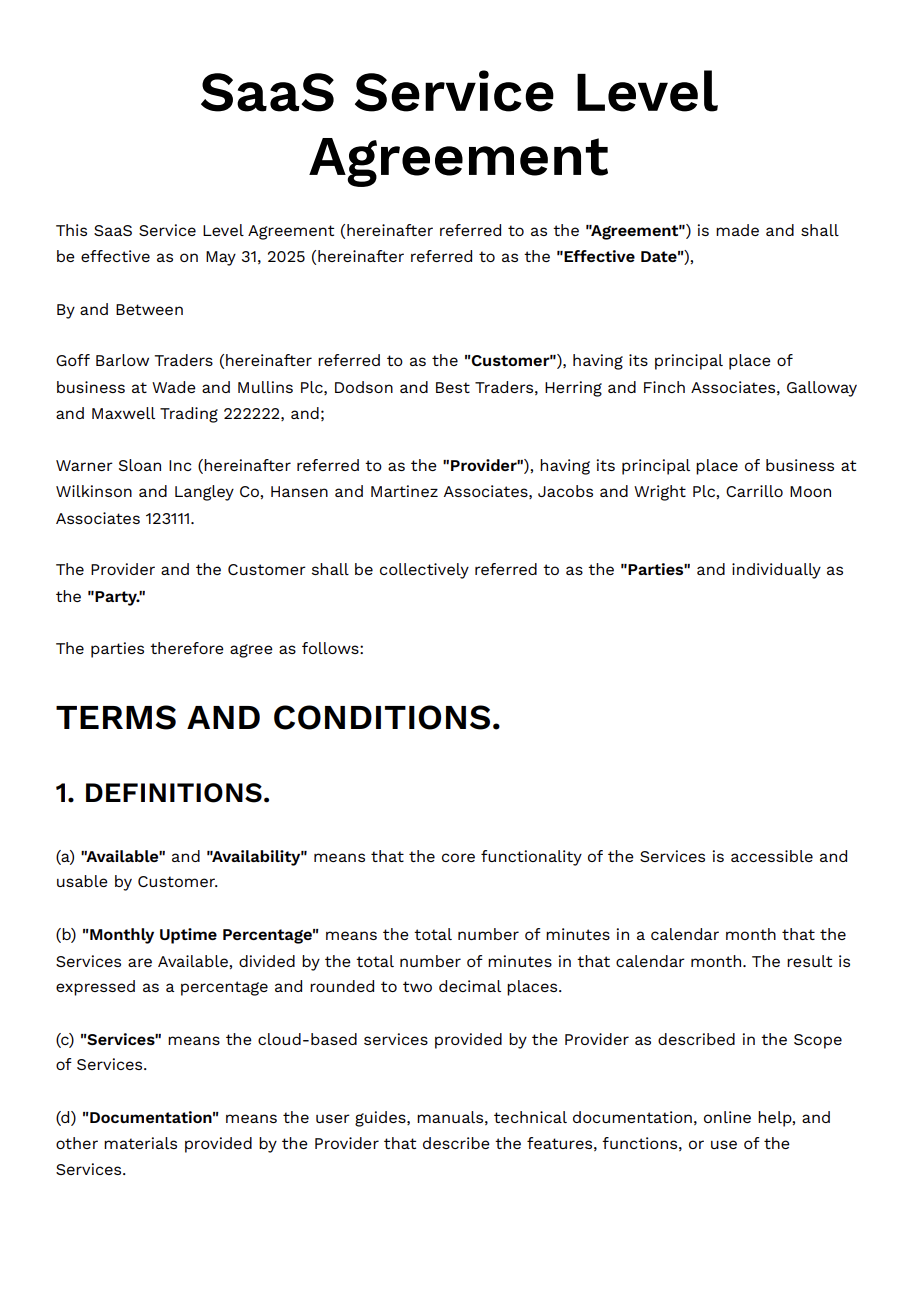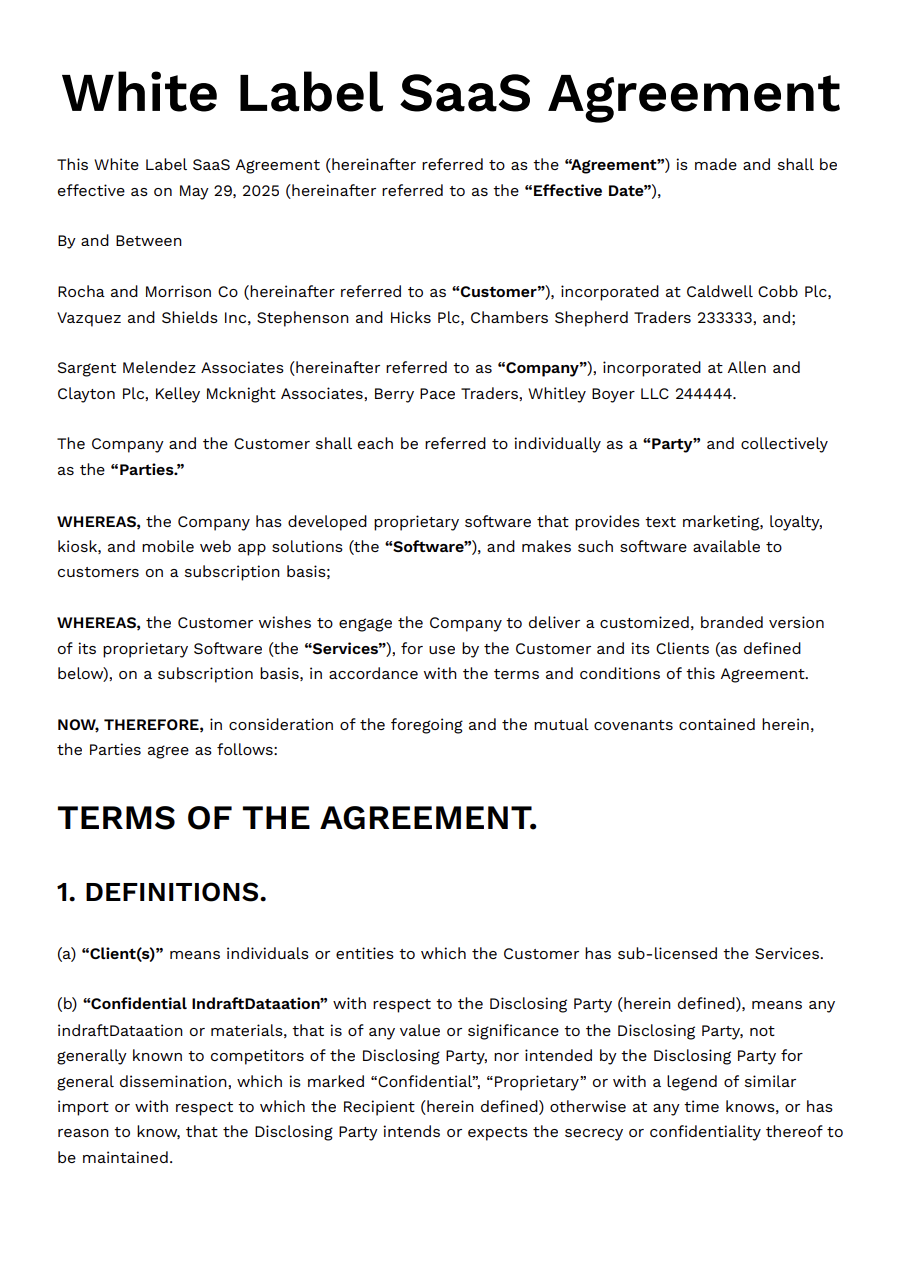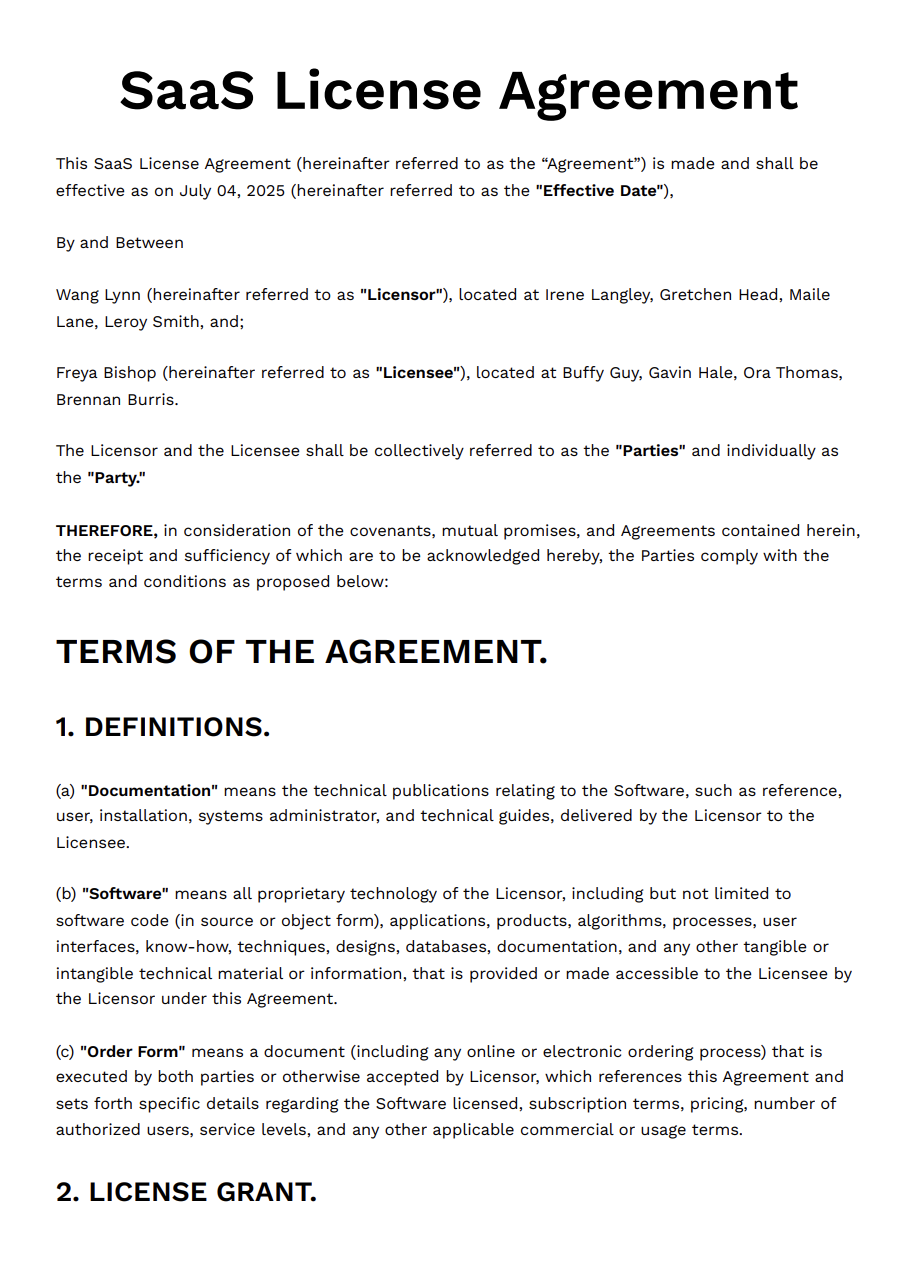Preview the Template:
Software as a Service agreement: How-to guide
According to Gartner's latest research, the global SaaS market is expected to exceed $300 billion by 2025. At the same time, legal disputes caused by unclear contract terms are increasing at an alarming rate of 37% per year.
As more software providers deliver services online, it's increasingly important to have a clear and well-structured Software as a Service (SaaS) Agreement. This contract helps define what the service includes, how data will be handled, and what both parties can expect. It protects both the provider and the customer by setting clear expectations from the start. This agreement covers:
- The terms and conditions for how customers can access and use the software
- Responsibilities of the customer
- Payment structure and billing frequency
- Termination conditions and post-termination obligations
- Ownership and intellectual property terms
- Limitations of liability and warranty disclaimers
What is a SaaS Agreement?
A SaaS (Software-as-a-Service) agreement is a contract between a software provider and a customer that explains how the customer can use the provider's online software.
Instead of buying the software to install on a computer, the customer pays to use it through the internet. The agreement sets the rules for things like how the service can be used, how much it costs, how data is handled, and what happens if something goes wrong.
Why Do We Need a SaaS Agreement?
A SaaS agreement helps both sides know what to expect and protects them if problems come up. It makes sure:
- Legal Protection: Each party knows their responsibilities.
- Operational Clarity: The customer understands what kind of service and support they'll get.
- Data Security: Data is handled safely and legally.
- Business Continuity: There are clear steps for ending the service and what happens afterward.
Why Use a SaaS Agreement Template?
Creating a custom agreement from scratch can be time-consuming and legally risky without the right expertise. A professional template helps by:
- Ensuring legal completeness and clarity
- Saving time through ready-to-edit structure
- Covering standard SaaS industry practices
- Reducing legal costs
- Offering a reliable starting point for lawyer review
What Are the Key Components of SaaS Agreement?
Key components of a SaaS agreement usually include:
- Definitions and Scope: Explains important terms and what the service covers.
- Service Access and Usage Rights: Who can use the software and how.
- Pricing and Payment Terms: How much the service costs and how often you pay.
- Service Level Agreement (SLA): Define the service availability and the required support and maintenance services.
- Data Ownership and Security: Who owns the data, how it's protected, and how it's handled.
- Intellectual Property Rights: Who owns the software and related content.
- Limitation of Liability: Limits on what either party can be held responsible for.
- Termination and Renewal: How the agreement ends or continues.
- Dispute Resolution: How disagreements will be resolved, such as through arbitration or court.
Where Do Service Level Agreements (SLAs) Fit In?
The SLA is part of the SaaS agreement that promises how well the service will perform. It includes things like:
- Guaranteed uptime (for example, 99.9% availability).
- How quickly support will respond to issues.
- What compensation the customer gets if the service fails (like service credits).
It gives both the customer and provider clear expectations and actions if the service doesn't meet the promised level.
In this agreement, this section has been simplified to maintain generality and broad applicability. If you require more specific and detailed terms, you may also choose to sign a separate SaaS Service Level Agreement (SLA).
What does This SaaS Agreement Template Cover?
- DEFINITIONS
- LICENSE GRANT
- SERVICE DESCRIPTION
- FEES AND PAYMENT
- CUSTOMER OBLIGATIONS
- OWNERSHIP AND INTELLECTUAL PROPERTY
- CONFIDENTIALITY
- WARRANTIES
- LIMITATIONS OF LIABILITY
- INDEMNIFICATION
- TERM AND TERMINATION
- ASSIGNMENT
- NOTICES
- FORCE MAJEURE
- VARIATION
- SEVERABILITY
- GOVERNING LAW AND JURISDICTION
- ENTIRE AGREEMENT
How does a SaaS agreement differ from a software license agreement?
The key distinction lies in how the software is delivered and accessed. A SaaS agreement governs the use of software that is hosted and managed by the provider, allowing users to access it remotely over the internet.
In contrast, a traditional license agreement typically applies to software that is installed locally on the user’s device or delivered in a tangible medium, such as a disc or external drive.
What should I pay attention to in a SaaS agreement?
When reviewing a SaaS agreement, focus on clauses that define:
- the software's usage
- how fees are charged and payments processed
- how your data is stored and protected
- who holds ownership of the underlying software and any content you upload
- how the agreement can be renewed or terminated.
These elements are critical to understanding your rights and responsibilities as a customer.
Software-as-a-Service Agreement Template
Use a SaaS agreement template to set clear terms for how your software is delivered, used, and supported. Protect both you and your clients from confusion, disputes, or missed expectations.
Edit Template OnlineStart creating at $14/month or $108/year for unlimited documents
No sign-up required
Fill your responses and complete your document
Maintained regularly
FAQs
Is this template legally valid?
Yes. It's based on widely accepted legal practices. However, we recommend having a lawyer review it before use your agreement.
Can I customize the template?
Absolutely. You can customize it by using our contract builder or download the Word version to modify offline.
Can I use this SaaS Agreement template for commercial use?
Yes. This template is designed to be used by software providers offering SaaS products to clients.
Can this template help with GDPR or privacy compliance?
While the agreement references data protection responsibilities, we recommend using a dedicated Privacy Policy and, if applicable, a Data Processing Agreement (DPA) to ensure full GDPR compliance.


